16 Gymnastic Rings Body Transformation Examples + Guide
Gymnastic rings transform your body with unmatched versatility. Build stabilizer strength, control, and visible muscle definition while mastering moves like pushups and dips. Portable and adaptable for any level, rings are cost-effective and endlessly rewarding—perfect for unlocking serious fitness gains anywhere you go.
You’ll learn:
- 16 Gymnastic rings before and after examples
- 🏁 Starting your own gymnastic rings transformation
- How to structure your gymnastic ring training
- Realistic first 20 weeks timeline for your gymnastic rings body transformation
- 2 Key reasons why gymnastic rings are the ultimate training tool
- 3 Reasons why gymnastic rings are the best bang for your buck
- How to get started with gymnastic rings today
16 Gymnastic rings before and after examples
(Images borrowed from FitnessFAQs)
#1 | Will, 30, USA.

Will's transformation is all about going all-in and trusting the process. At 30, he swapped half-hearted routines for a disciplined gymnastic rings program.
In just 18 weeks, the results are etched into his back – wider lats, more defined traps, and that unmistakable gymnastic ring strength that makes his muscles pop.
#2 | Nils, 29, UK.

Nils’ journey with a gymnastic rings program speaks volumes. In a few months, he went from 100kg, stuck in a sedentary gaming lifestyle, to a lean, defined 80kg physique.
His before-and-after tells the story – shredded abs, a chiseled chest, and a new life of movement and strength.
#3 | BG, New Zealand.

BG turned things around with gymnastic rings training. Transitioning from weightlifting to calisthenics helped him shed excess weight and focus on functional strength.
His transformation is clear – a leaner, more defined physique with sculpted abs and sharpened muscle definition.
Rings rebuilt his discipline and results.
#4 | Dan, 35, USA

Dan completely transformed his life with a gymnastic rings program and better nutrition.
Starting at 208 lbs, he shed over 60 lbs, going down to 147 lbs while building lean muscle.
At 5 '7″, Dan is now in the best shape of his life, showing what discipline, clean eating, and ring training can achieve.
#5 | Jan, 18, Germany

Jan, 18, Germany, discovered the missing link to his arm growth with gymnastic rings training.
After years of lagging progress, the dynamic instability of the rings unlocked strength and size in his biceps, delivering the kind of gains that standard routines never managed.
Simple, effective, and game-changing.
#6 | Mclain, 45, Mexico.

The change is night and day. In the "before" shot, Mclain carries a bulkier frame, but the "after" shows a lean, chiseled build with sharp definition across his chest, shoulders, and abs.
The visible fat loss and balanced muscle tone highlight a year of dedication to bodyweight training.
Switching from heavy weights to gymnastic rings let him break free from years of soreness and burnout.
The rings’ instability demands precision and control, which sculpted lean muscle while improving his joint health and mobility.
At 45, this transformation proves gymnastic rings aren’t just for the young—they’re a powerful, sustainable tool for rebuilding strength and staying healthy long-term.
Strong is strong, and Mclain’s progress is proof.
#7 | Mark, 21, USA.

Mark’s six-month transformation is a masterclass in precision and control. The “before” photo shows a solid foundation, but the “after” reveals sharp muscle definition, a leaner physique, and visible abs.
Dropping 5% body fat while gaining 3 lbs of muscle shows just how efficient gymnastic rings training can be.
By swapping traditional weightlifting for rings, Mark pushed his body in ways that built functional strength while protecting his joints.
The smart programming kept his progress steady and his body injury-free—a massive win for long-term fitness.
Mark’s results prove gymnastic rings are more than just equipment—they’re a game-changing tool for transformation.
Stronger, leaner, and built to last, his journey is the perfect example of what focused effort delivers.
#8 | Alexander, 39, Russia.

Alexander’s transformation at 39 is nothing short of phenomenal. In the “before” photo, you see a soft, average build, but the “after” image showcases jaw-dropping muscle definition and a shredded core.
His chest, shoulders, and abs are sculpted, a testament to the precision and effectiveness of bodyweight training.
By committing to gymnastic rings training alongside a solid lower body routine, Alexander achieved a physique that’s both powerful and balanced.
The rings demanded full-body stability and control, while the legs program ensured his foundation wasn’t skipped.
Alexander’s progress proves that age is no barrier. With consistent effort and a smart approach to training, he built a body that’s both strong and lean—proof that bodyweight training can deliver elite-level results.
#9 | Pawel, 31, Poland.

Pawel’s four-month transformation shows how gymnastic rings can deliver game-changing results in a short time.
The "before" photo highlights a solid base, but the "after" shot reveals a leaner, more chiseled physique with sharp chest definition, sculpted arms, and a rock-solid core.
His shoulders and triceps pop with the kind of detail only bodyweight control can build.
The rings' demand for precision and full-body engagement clearly helped Pawel unlock new levels of strength and symmetry.
In just four months, he achieved results that usually take years with traditional training.
Pawel’s progress is proof that consistent effort and gymnastic rings training can produce massive results.
If this is what’s possible in four months, imagine the long-term potential.
#10 | Stuart, 34, Scotland.

Stuart’s transformation at 34 shows the power of switching up your routine. The "before" photo reveals a bulkier frame, but the "after" shot is a different story—defined abs, a chiseled chest, and a lean, athletic look.
His core strength and sharper muscle tone highlight how effective gymnastic ring training is for building a balanced physique.
Coming from a weightlifting background, Stuart embraced the challenge of calisthenics.
The rings pushed him to focus on stability and control, resulting in stronger functional muscles and improved symmetry.
This transformation proves that gymnastic rings aren’t just for beginners.
Even experienced lifters like Stuart can unlock new levels of fitness by adding calisthenics into their training.
#11 | Bjorn, 42, Australia.

Bjorn’s transformation at 42 showcases the impact of switching to gymnastic rings after decades of weight training.
In the "before" shot, his physique is solid, but the "after" photo takes it to the next level—ripped abs, defined obliques, and lean muscle across his entire frame. The shift to a leaner, sharper look highlights the unique benefits of gymnastic rings.
Gymnastic rings added a new challenge to Bjorn’s training, demanding stability and precision that traditional weights often overlook. The result is a physique that’s not just strong but functionally powerful, with improved core control and muscle definition.
Bjorn’s progress proves that even experienced lifters can benefit from shaking things up.
Gymnastic rings bring a fresh approach to training, delivering strength and mobility while keeping workouts exciting and effective.
#12 | Dimitri, 19, Greece.

Dimitri’s transformation at just 19 shows how gymnastic rings can completely reshape your physique in just one year.
In the "before" photo, his back appears narrow and underdeveloped. The "after" photo reveals broader shoulders, a thicker upper back, and clearly defined lats that create balance and symmetry.
This progress highlights the unique ability of gymnastic rings to build functional, athletic muscle. Every pull-up, row, and hold worked Dimitri’s stabilizers and core, forcing his body to adapt and grow stronger.
Rings go beyond muscle building—they teach control and precision, creating strength that lasts. Dimitri’s dedication proves that age doesn’t matter when you have focus and the right tools.
This transformation is a blueprint for building strength, confidence, and a solid foundation for lifelong physical mastery.
#13 | Denis, 22, Russia.

Denis’s transformation after more than a year of gymnastic rings training highlights just how far focused effort can take you.
In the “before” shot, his build is lean but lacks refinement and definition. The “after” photo is a striking upgrade – defined abs, sculpted chest and shoulders, and a more balanced, athletic frame.
A year of gymnastic rings didn’t just build visible muscle. It created control, precision, and total-body strength. The deep core definition and improved symmetry show how rings target stabilisers and engage every muscle group.
Denis’s journey proves that gymnastic rings can elevate a solid foundation to the next level. Consistent training and a smart approach turned effort into functional, aesthetic results. His progress is proof that hard work with the right tools pays off in spades.
#14 | Beau, USA.

Beau’s 18-week transformation is proof of what consistent gymnastic rings training can deliver.
In the “before” photo, you see a softer build and higher body fat. The “after” photo is a whole different story – lean muscle, sharp abs, and sculpted shoulders that speak to the power of focused effort.
Gymnastic rings training pushes full-body engagement, and Beau’s results show the payoff.
Intelligent, progressive programming replaced traditional weightlifting and allowed him to build strength, burn fat, and reveal a defined physique.
This transformation highlights that gymnastic rings are more than a workout tool – they’re a path to unlocking potential.
With the right plan and dedication, results like Beau’s are achievable for anyone.
#15 | Daniel, 27, Sweden.

Daniel’s six-month transformation showcases how gymnastic rings training can deliver results with precision and fun. In the “before” photo, he has a solid build, but the “after” photo is striking—a lean, chiseled physique with defined abs and sharper muscle tone.
Dropping 12 kg and reducing body fat by 8% reflects disciplined effort and effective programming.
Ring training works because it combines strength with balance and control.
Daniel’s progress proves that functional exercises using gymnastic rings target fat loss and muscle definition simultaneously, all while keeping training engaging.
This transformation highlights what’s possible with a focused approach and commitment.
Rings are not just a workout tool—they’re a method to sculpt your best self.
#16 | Jan, 18, Germany. (Upper body)

Jan’s transformation at just 18 showcases how gymnastic rings can take your fitness to the next level.
In the “before” photo, he has a lean frame with visible potential, but the “after” image is a different story—broad shoulders, carved abs, and a thicker, more muscular upper body.
The definition in his chest and arms is a testament to targeted, effective training.
Gymnastic rings training challenges even those who think they’ve mastered bodyweight exercises.
For Jan, the rapid strength and muscle gains delivered an immediate rush, fueling his motivation to keep pushing without shortcuts or complaints.
His progress highlights the power of consistent effort and the incredible results rings can achieve in just weeks.
🏁 Starting your own gymnastic rings transformation
Where should you begin your ring journey? It all starts with choosing the right equipment.
Wooden rings
Ideal for sweaty hands due to their natural grip and smooth finish.
Plastic rings
Weatherproof and perfect for outdoor training in tough conditions.
Straps
Opt for bombproof straps with numbered markings for quick, precise adjustments. Adjustable carabiners are a game-changer for supersets.
Before you start
- Choose durable rings suited to your environment.
- Find a sturdy structure—tree branch, pull-up bar, or garage beam.
- Secure your straps properly and double-check stability.
Setting up your rings is simpler than it seems.
At home
Attach them to a pull-up bar, garage frame, or even a ceiling beam.
Outdoors
Look for playground monkey bars, swing sets, or tree branches.
Take it at your own pace
Shaking hands and unsteady movements are normal signs that your stabilizers are waking up.
Start simple and practice support holds:
- Grip the rings
- Lock your elbows
- Hold a plank-like body
Progress to incline push ups or rows as your confidence builds.
Adapting to your level
For beginners
Raise the rings for incline pushups.
For progression
Lower them closer to the floor for increased resistance.
By consistently challenging yourself with small adjustments, you’ll avoid plateaus and stay motivated.
Your journey is just beginning—let’s move into the first 20 weeks and see what’s possible…
How to structure your gymnastic ring training
Beginner routine – push day example
| Exercise | Reps | Sets | Tempo | Rest | Details |
| Support holds | N/A | 3 | N/A | 60 secs | Grip rings, lock elbows, keep the body straight. Aim for 40–60 sec holds. |
| Incline pushups | 8–12 | 3 | 4-1-2-0 | 60 secs | Adjust ring height to control difficulty. Lower for more resistance. |
| L-sit hold (abs) | N/A | 3 | N/A | 60 secs | Focus on core activation. Start at 40–60 sec holds. |
Intermediate routine – pull day example
| Exercise | Reps | Sets | Tempo | Rest | Details |
| False grip hangs | N/A | 4 | N/A | 50 secs | Improve grip strength and prepare for advanced moves like muscle-ups. |
| Ring pull-ups | 8–12 | 4 | 4-1-2-0 | 50 secs | Maintain strict form; lower body slowly to control movement. |
| Hanging knee raises | 8–12 | 3 | 4-1-2-0 | 60 secs | Engage core fully. Extend legs for more difficulty. |
Advanced routine – push day example
| Exercise | Reps | Sets | Tempo | Rest | Details |
| Support holds | N/A | 5 | N/A | 40 secs | Master stability with longer holds. Aim for 60–80 sec holds. |
| Weighted ring dips | 8–12 | 5 | 4-1-2-0 | 40 secs | Use a weight vest for added resistance once bodyweight dips are manageable. |
| Tempo push ups | 8–12 | 5 | 4-2-2-0 | 40 secs | Focus on slow, controlled lowering and pausing at the bottom. |
Weekly training split example – push, pull, legs
| Day | Focus | Exercises |
| Monday | Push | Support holds, incline/tempo push ups, L-sit holds |
| Tuesday | Pull | False grip hangs, ring rows/pull-ups, hanging knee raises |
| Wednesday | Legs | Ring-assisted squats, hamstring curls |
| Thursday | Push | Weighted dips, support holds, ring pushups |
| Friday | Pull | Skin-the-cat progressions, ring pull-ups, false grip holds |
| Saturday | Legs | Advanced ring-assisted lunges, Bulgarian split squats |
| Sunday | Core-focused day | L-sit holds, hanging knee raises, plank holds on rings |
Core focus day example
| Exercise | Reps/Hold Time | Sets | Tempo | Rest | Details |
| L-sit hold | 40–80 sec | 3 | N/A | 60 secs | Focus on maintaining straight legs and a tight core. |
| Hanging knee raises | 8–12 | 3 | 4-1-2-0 | 60 secs | Extend legs for increased difficulty. |
| Plank hold on rings | 40–80 sec | 3 | N/A | 60 secs | Build stability and challenge core with the inherent ring instability. |
The only downside is rings don’t replace lower body training
Gymnastic rings dominate the upper body and core, but they’re limited when it comes to legs.
They’re just not built to load the lower body with the same intensity as weights or calisthenics.
Limited leg exercise options
While some leg exercises work on rings, they’re better for assisting form than building max strength:
Pistol squats
Rings add stability, helping beginners balance while keeping the movement challenging.
Assisted lunges
Rings let you control depth and balance, hitting stabilizers harder.
Pairing rings with effective leg training
A strong lower body needs variety. Here’s how to balance your routine:
Weighted exercises
Barbell squats and deadlifts load legs for strength and size.
Calisthenics
Moves like Bulgarian split squats and shrimp squats target single-leg power.
Plyometrics
Box jumps or broad jumps build explosiveness, perfect for athletes.
Building full-body strength
Rings will skyrocket your upper body and core strength, but pairing them with weights or advanced bodyweight moves ensures you’re not skipping leg day.
Balance both, and you’ll be strong from top to toe.
Realistic first 20 weeks timeline for your gymnastic rings body transformation
Week 1 – Shaking & soreness
Your first session will humble you. The rings wobble, your muscles shake, and suddenly, stabilizers you didn’t even know existed are lighting up.
This instability isn’t failure—it’s your body learning to recruit muscles that machines or weights ignore.
Try this
Support holds. Grip the rings firmly, lock your elbows, and keep your body aligned like a plank.
Hold for as long as possible with perfect form. Don’t focus on time—focus on staying steady.
Progress checklist
- ✅ Experienced deep soreness in shoulders and core.
- ✅ Built the foundation with steady support holds.
- ✅ Prioritised recovery (hydration, nutrition, sleep).
Week 2 – Adapting to instability
The shakes start to fade as your stabilizers kick into gear.
Each rep feels less like a battle and more like controlled movement, but don’t let that lure you into sloppiness—control is everything.
Key focus this week
Ring rows and incline pushups. Adjust the ring height to match your strength—higher for beginners, lower for more intensity.
This flexibility lets you progress at your own pace.
Benefits to watch for
- Improved energy levels and better sleep patterns as your body adapts.
- Boosted confidence as movements start to feel natural.
Progress checklist
- ✅ Stabiliser muscles activated and adapting.
- ✅ Introduced rows and push ups to the routine.
- ✅ Maintained consistency for muscle memory.
Week 3 – Small victories
By now, you’ll feel small but significant wins stacking up. Pushups look cleaner, rows feel more controlled, and your body is starting to respond with strength.
Try this
Dial in your pushup form by lowering the rings slightly for an extra challenge.
Feeling confident? Attempt your first ring dip—but keep the range of motion small to stay controlled.
Relatable obstacle
You might feel a dip in motivation as the novelty wears off.
Remind yourself why you started, and focus on the little wins each season brings. Getting better rather than being perfect is what matters.
Progress checklist
- ✅ Achieved better form in rows and pushups.
- ✅ Introduced dips with limited motion.
- ✅ Pushed through motivation dips by staying consistent.
Week 4 – Initial strength gains
Things are clicking now. Your form is sharper, reps are smoother, and endurance is noticeably improved.
You’ll start to feel stronger not just in workouts, but in daily activities.
Action plan
Lower the rings even further for rows and push ups to amp up the resistance.
Add static holds to your dips—hover in the bottom position and feel the burn.
What to expect
Better posture, more energy throughout the day, and that first glimpse of muscle definition.
These early gains prove you’re on the right path.
Progress checklist
- ✅ Increased resistance in rows and pushups.
- ✅ Changing static holds into dips.
- ✅ Noticed improved posture and energy.
Weeks 5–8 – Building a solid foundation
You’ve mastered the basics—now it’s time to build strength systematically.
Variations like archer push ups, false grip hangs, and ring-assisted squats keep workouts fresh while targeting new muscle groups.
Why this matters
Your core stability and grip strength will level up significantly. Plus, consistent recovery ensures soreness doesn’t slow you down.
Try this
Challenge yourself with a new variation each week. For example, add archer pushups in week 6 and false grip hangs in week 7 to keep pushing your limits.
Progress checklist
- ✅ Mastered basic moves with confidence.
- ✅ Started integrating advanced variations.
- ✅ Noticed visible improvements in grip strength and stability.
Weeks 9–12 – Breaking through plateaus
Some exercises will feel easier now, while others (like dips or pull ups) might still feel impossible. That’s normal. This is where you break through by doubling down on form and control.
Key moves
Ring pull ups, tricep extensions, and skin-the-cat progressions. These moves test your growing strength while keeping sessions exciting.
Motivation boost
Confidence grows as you hit new milestones. Celebrate small wins to keep the momentum going and focus on weekly goals to stay motivated.
Progress checklist
- ✅ Broke through early plateaus with new moves.
- ✅ Improved form in challenging exercises.
- ✅ Stayed motivated by setting and hitting weekly goals.
Weeks 13–16 – Visible transformation
By now, the results are impossible to ignore. Your upper body looks more defined, your core feels solid, and you’ve got grip strength for days.
Some people will ask, “What have you been doing?”
Take it up a notch
Introduce tempo control to pushups and dips—slow down the lowering phase to maximize strength gains.
Ready for more? Start working on muscle-up drills.
Why it matters
Tempo training builds deliberate, functional strength and control. Plus, the rings feel more like a tool and less like an obstacle.
Progress checklist
- ✅ Introduced tempo training for precision and strength.
- ✅ Attempted muscle-up progressions.
- ✅ Felt stronger and more confident than ever.
Weeks 17–20 – Advanced capabilities
This is where mastery begins. You’re moving with complete control, flowing from one exercise to the next and experimenting with advanced combinations.
Key combinations
Transition from archer push ups into ring pull ups or hold a false grip while practicing muscle-ups.
These combinations push your limits and solidify your progress.
The payoff
Your core feels unshakeable, your joints are stable, and you’ve built strength that carries over into every aspect of life.
Progress checklist
- ✅ Mastered basic and intermediate exercises.
- ✅ Experimented with advanced combinations.
- ✅ Built a solid foundation for long-term mastery.
What’s next?
By week 20, you’ve unlocked the potential of gymnastic rings.
You’ve conquered the basics, tackled intermediate moves, and started exploring advanced exercises.
But this isn’t the end—it’s just the beginning.
Keep pushing, master moves like front levers and planches, and embrace the lifelong journey of strength and resilience.
Revisit this timeline whenever you’re stuck. The rings are as versatile as you are determined.
2 Key reasons why gymnastic rings are the ultimate training tool
Why are gymnastic rings the secret weapon for total body strength? Unlike fixed equipment, rings force every part of your body to work harder by challenging your stabilizer muscles.
Their instability activates tendons, ligaments, and deep muscle fibers, building not only visible muscle but also real-life strength and resilience.
This reduces injury risk and makes your body more adaptable to everyday challenges.
1️⃣ Rings double the difficulty of basic exercises
Push ups
These become a full-body effort, targeting your chest, shoulders, triceps, core, and grip strength.
Dips
A humbling challenge, even for seasoned lifters. If you can breeze through 20 dips on parallel bars, expect a single dip on rings to demand everything you've got.
"Mental focus & patience" are as essential as physical strength with rings
The initial shakiness and struggle are part of the process.
Each milestone:
- a steady dip
- a controlled pushup
- or your first support hold,
Is deeply rewarding.
The journey builds discipline and mental resilience, leading to mastery of moves like the muscle-up, skin-the-cat, or even the iron cross.
2️⃣ Rings evolve with your strength, offering limitless adaptability
- Raise the rings for rows to focus on your lats and biceps.
- Lower them for push ups to blast your chest and core.
Every session stays fresh and challenging. The rings don’t just build your body—they train your mind to push limits and adapt.
What’s next? Now that you understand why rings are the ultimate tool, let’s explore how to get started.
3 Reasons why gymnastic rings are the best bang for your buck
Gymnastic rings deliver unmatched versatility, making them an investment that pays off every single workout.
🥇 Versatility that adapts to everyone
Rings are lightweight, portable, and fit seamlessly into any workout setup:
- Beginners can use them for incline pushups or assisted rows, building strength without feeling overwhelmed.
- Experts can push limits with muscle-ups, skin-the-cat progressions, or iron crosses.
- They work anywhere – hang them from a tree, a ceiling beam, or even a sturdy swing set.
- Their adaptability ensures you’re never stuck without a training option.
🥈 Return on investment
Compared to traditional gym memberships or heavy equipment, gymnastic rings give you:
Affordability
A one-time purchase replaces costly weights or machines.
No subscriptions
Forget monthly fees. With rings, the only thing you need is a solid place to hang them.
Durability
High-quality wooden or plastic rings with bombproof straps last for years.
Some users report their rings are still going strong after four years of heavy use.
🥉 Increased motivation through fun & rewards
Rings make workouts feel less like a chore and more like a challenge:
- The inherent instability of rings keeps exercises fresh and engaging, stimulating stabilizers and adding intensity to simple movements.
- Progression is deeply rewarding. Each controlled rep, steady hold, or advanced move feels like a personal victory.
- Workouts feel playful where you train in the park, at home, or on the go. Ring sessions combine focus and freedom, keeping motivation high.
How to get started with gymnastic rings today
Getting started with gymnastic rings is simpler than it looks. With the right gear and setup, you’ll be on your way to transforming your workouts.
What to look for in a quality set
Not all rings are created equal. Choose carefully to ensure durability and comfort:
Material matters
Wooden rings offer a smooth, natural grip that feels great in the hands, especially for sweaty palms. Plastic rings are weatherproof and ideal for outdoor use.
Strap durability
Look for thick, heavy-duty straps that won’t fray or slip. Bombproof straps ensure safety and longevity.
Markings for adjustments
Numbered strap markings save time and hassle, allowing for quick, precise height adjustments during your workouts.
Grip quality
Rings with a smooth finish prevent splinters and ensure comfort. Sand rough edges if needed to avoid irritation during use.
Quick setup tips to maximize your first workout
Setting up your rings takes minutes if you know where to hang them:
Indoor options
Attach to a pull-up bar, sturdy ceiling beam, or even a reinforced garage frame. Make sure the structure can hold your body weight safely.
Outdoor setups
Look for a strong tree branch, monkey bars at a playground, or a swing set. Double-check the stability before you start training.
Optimal height
For beginners, set the rings high enough for incline pushups but low enough for assisted rows. This ensures you can easily transition between exercises.
Your first workout checklist
Start with basic moves to adapt your body to the instability of rings:
✅ Support holds
Grip the rings, lock your elbows, and hold a straight-body plank position for as long as you can (aim for 40–60 seconds).
✅ Incline pushups
Adjust the rings to chest height and perform controlled pushups with a 4-1-2-0 tempo.
✅ Ring rows
Lower the rings and keep your body straight while pulling yourself up, focusing on full control.
Why start today?
The sooner you start, the sooner you’ll feel the benefits in your strength, control, and confidence.
Rings are a lifetime tool, growing with your strength and skills, and they’re ready whenever you are.
🫵 Join the transformation
Your journey with gymnastic rings is just beginning, and we’d love to hear about it.
🗣️ Share your experience
Drop a comment below with your gymnastic rings progress, tips, or any questions you have.
🤝 Connect with our comrades
Join our Gravgear Telegram channel to swap stories, share progress, and get inspired by over 3k other fitness enthusiasts.
📯 Spread the word
Know someone ready to level up their fitness? Link this blog and help them start their own transformation.

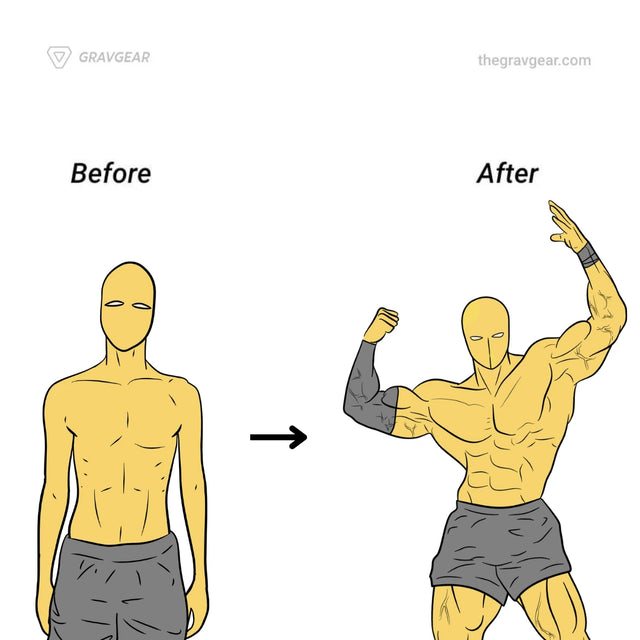
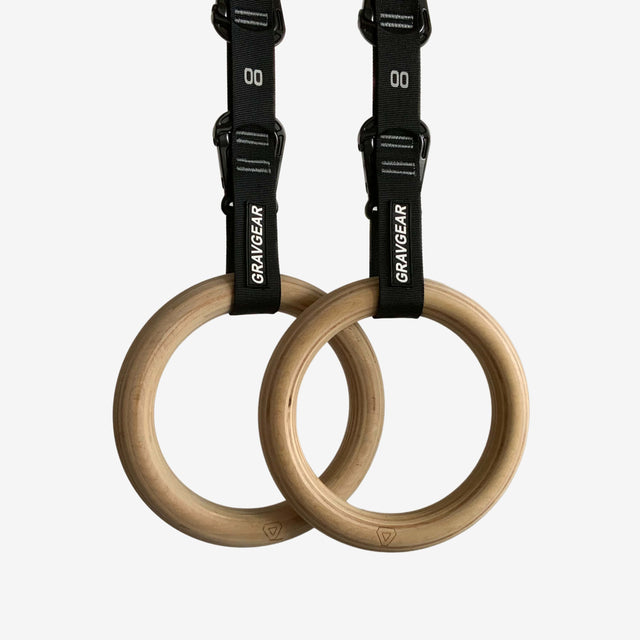




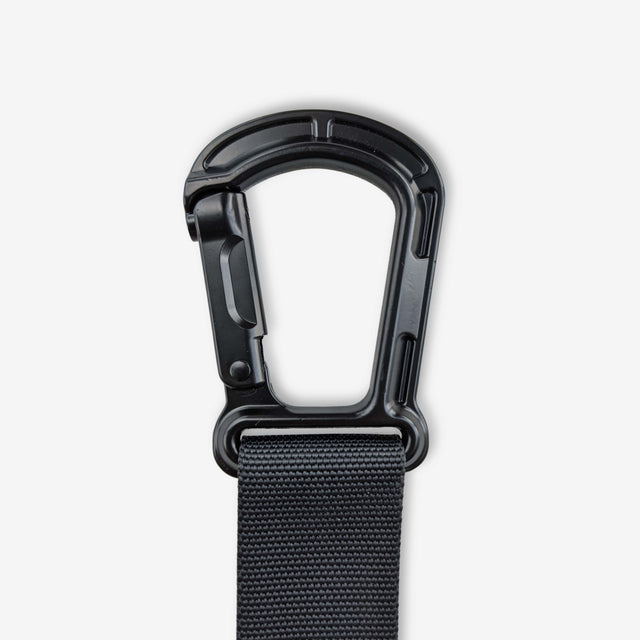

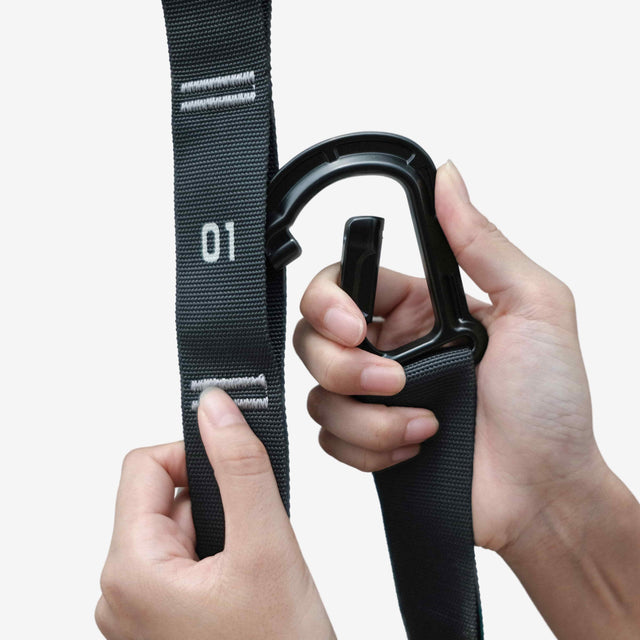
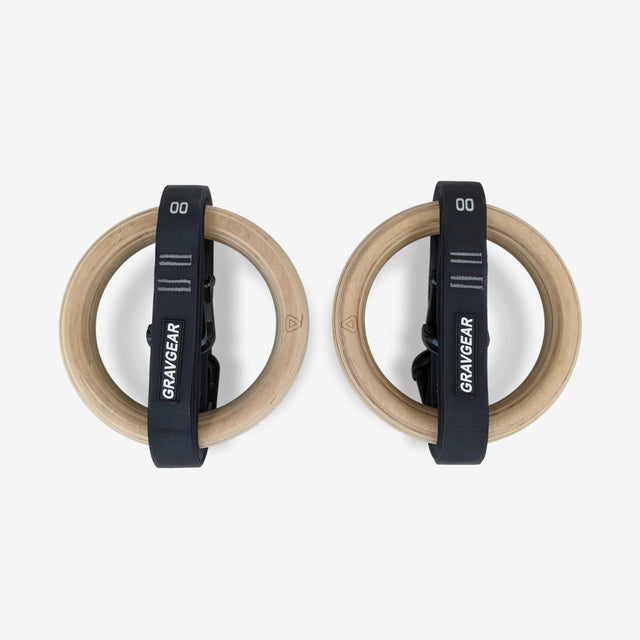
0 Comments
There are no comments for this article. Be the first one to leave a message!